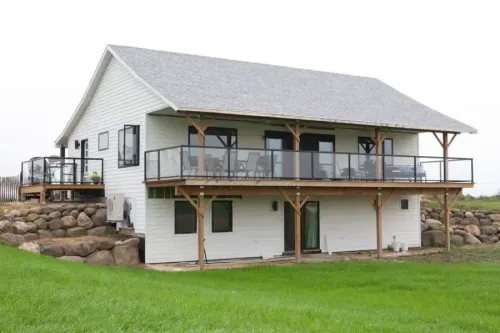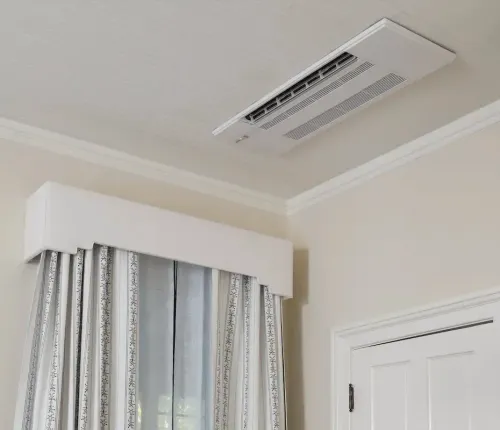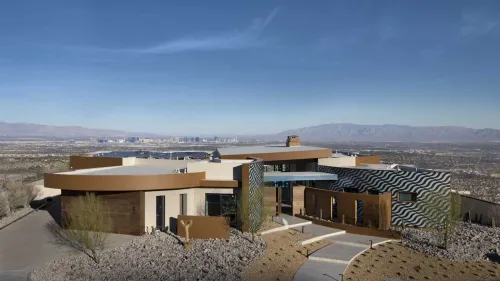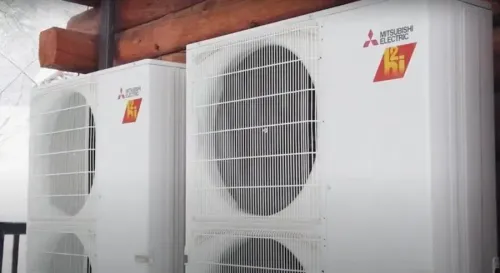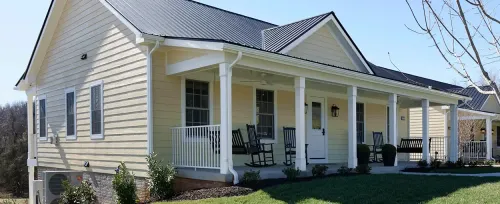Project Location: Northbrook, Illinois
Completion Date: June 2014
Challenge
Selecting an HVAC system that would meet LEED’s energy-efficiency standards and provide a healthy, sustainable environmentSolution
Mitsubishi Electric heat pumpsResult
LEED Platinum certification and allergy-alleviating indoor air quality
Jenny and Aaron Stash wanted to buy a home in Northbrook, Illinois, a suburb of Chicago. When they didn’t find a home that matched their needs, they decided to build one. “Once we decided to build a house, we wanted to do it right,” said Jenny. Doing it right meant three things: sustainability, indoor air quality and energy efficiency. A three-floor, 3,500-square-foot house was carefully designed from the ground up, inside and out: bamboo flooring, indigenous plantings, fiber-cement siding, Led lighting and one extremely energy-efficient HVAC system from Mitsubishi Electric. The result: a happy family and LEED® Platinum certification.
For sustainable design, the Stashes called Michael S Kollman, Aia, LEED Ap and the president of SmartHaus Inc., Prairie View, Illinois, a high-performance home design-build company. Kollman said everyone was “on the same page about environmental responsibility, so we studied every component we put into the house. The cooling and heating system was a huge part of that analysis.”
To explore various options, Kollman worked with two University of Illinois engineers. “They’d developed energy modeling programs and a demand-based ventilation system that we used. From energy efficiency and cost-benefit standpoints, we arrived at a conclusion: Mini-split heat pumps with a conditioned energy recovery ventilation system would give us all the features we wanted and the highest-obtainable indoor air quality.”
“We also looked at geothermal, radiant and forced air systems, but because the envelope is so efficient we just didn’t need a tremendous amount of energy. Mini-splits were the perfect solution,” said Kollmam. Aaron added, “Electric also made sense because the house is pre-wired for solar panels.
The brand choice of Mitsubishi Electric was equally decisive. Kollman said, “We looked at other options, but from efficiency and track record standpoints, it felt like Mitsubishi Electric would be the best product out there for our needs.”
Finding the best product was key to achieving LEED Platinum. “There’s a section called ‘Energy and Atmosphere,’ which is about optimizing energy performance. That means reducing distribution losses and using highly efficient equipment.
With Mitsubishi Electric’s mini-splits, it’s a ductless system, so there are no distribution losses. Mitsubishi Electric also reached the very top end of cooling and heating efficiencies. This helped us to obtain LEED certification,” said Kollman.
Almost one year after installation, the team is interpreting collected energy data. According to Kollman, “The energy modeling showed us that the home would consume 60 percent less energy than a home built to today’s energy standards. The actual usage is very much in line with that.”
The U.S. Energy Information Administration’s most recent energy survey shows that Illinoisans’ homes consume 3,146 kWh per month on average. The Stashes’ home averages about one-third of that; last fall, for example, the monthly average was 846 kWh. That energy costs “about $100 a month, which is amazing for a house of that size!” said Kollman. Aaron added, “Even in the summer months, the utility bill is comparable to our old house, which was one-third of the size.”
The utility bills are low, but the comfort is high. Jenny said, “We’ve had parties with 50 people and the system is able to maintain a comfy temperature. It’s very comfortable in the house.” Aaron is a big proponent of the system’s dehumidification mode, as well: “Our home is built so tight. The system draws humidity out of the air, which is not something most systems do.”
Even maintenance has been easy. “We wash the filters quarterly – just rinsing them underwater. It’s very low-maintenance,” said Aaron.
All of the pieces add up to what Aaron calls, “a house based around how people live” – there aren’t unused rooms, the utilities are affordable and family members’. allergies are finally at bay. LEED certification is a great bonus; Jenny said, “We didn’t go into the project expecting LEED Platinum, but after carefully selecting all the elements of our house, it was a nice reward. We’re hoping to inspire others to go this route, too.”
Project Team
- Homeowners: Jenny and Aaron Stash
- Architect: SmartHaus, Inc., Michael S. Kollman, Aia, Prairie View, Illinois
Equipment Installed
- (3) MUZ Outdoor Units
- (3) MSZ Wall-mounted Indoor Units


